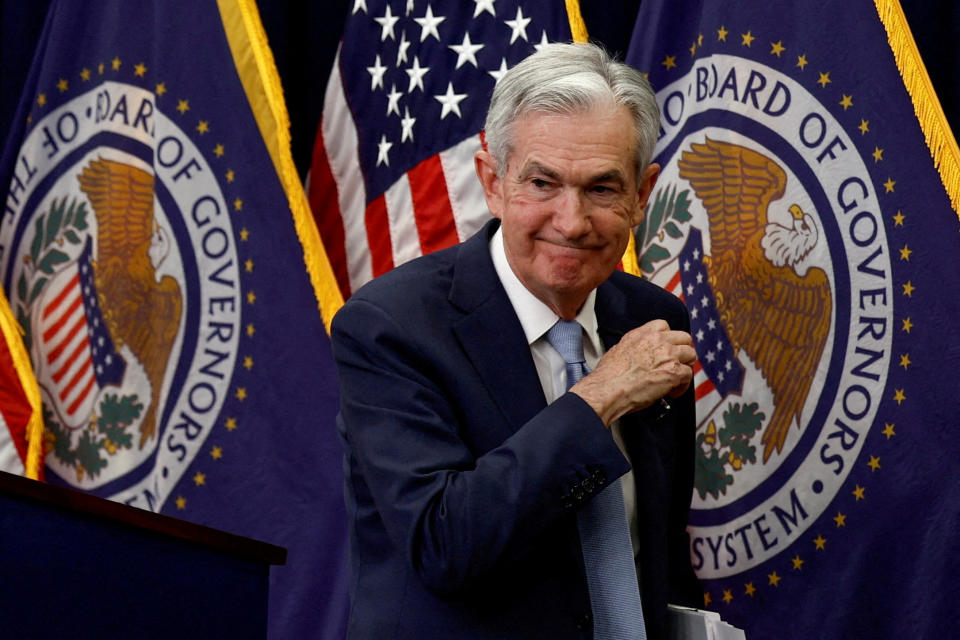After a whipsaw month of market action, the S&P 500 (^GSPC) logged its fourth-straight winning month to end August.
For the month, the S&P 500 added nearly 2.3% while the Dow Jones Industrial Average (^DJI) added almost 1.8% and sits at all-time high. Meanwhile, the Nasdaq Composite (^IXIC) added more than 0.6%.
US markets will be closed for Labor Day on Monday before attention turns to incoming labor market data set for release throughout the week.
The August jobs report, due out on Friday, will headline economic releases in the week ahead as investors look to see whether the signs of slowing in the July jobs report were overstated or an early warning of a broader slowdown.
Updates on job openings and private wage growth are also on the schedule, as well as activity checks from the services and manufacturing sectors.
In corporate news, quarterly reports from Broadcom (AVGO) and Dick’s Sporting Goods (DKS) headline a quiet week for earnings releases.
A closer look at labor
In July, the US economy added 114,00 jobs, well below estimates, while the unemployment rate hit 4.3%, its highest level in nearly three years. The report stoked recession fears as concerns about a weakening labor market grew.
But in the weeks that followed, additional data suggested the US economy remained rather resilient. Unemployment claims, a weekly indicator economists use to track the labor market in between employment reports, have reversed from their upward trend seen in July.
And many economists believe this points to weather-related causes impacting the July jobs report to overstate weakness in the labor market.
Morgan Stanley economist Sam Coffin argued in a note to clients last week that a large reason why unemployment hit 4.3% in July was an unusually large increase in temporary layoffs. As the immediate shock to the Texas labor market from Hurricane Beryl subsides, Coffin doesn’t see a repeat.
Coffin and the Morgan Stanley economics team forecast that unemployment will fall to 4.2% while the US economy added 185,000 jobs last month.
“We expect the reacceleration in payrolls to leave the Fed cutting 25bps in September,” Coffin wrote.
Consensus expectations among economists surveyed by Bloomberg project the US economy added 163,000 jobs in August while the unemployment rate ticked down to 4.2%. This would mark the first decrease in the unemployment rate since March.
The Fed has ‘leeway’
On Friday, the latest reading of the Fed’s preferred inflation gauge showed price increases continuing their downward trend toward the Fed’s 2% target.
This, economists argue, puts further pressure on next Friday’s labor report when deciphering whether or not the Fed will cut interest rates by 25 or 50 basis points at its September meeting.
“A Fed rate cut in September is assured after Chair Powell’s Jackson Hole speech,” Nationwide senior economist Ben Ayers wrote in a note to clients on Friday. “But the further cooling of inflation could give the Fed leeway to be more aggressive with rate declines at coming meetings, especially if the labor market shows a steep deterioration.”
Ayers added, “We still project more cautious [25 basis point] cuts at the remaining three FOMC [meetings] of 2024, but the door is open for larger decreases if economic conditions weaken more than expected.”
As of Friday, markets were pricing in a roughly 31% chance the Fed opts for a 50 basis point rate cut instead of 25 basis points at its September meeting, per the CME FedWatch Tool.
Still, traders have priced a full percentage point of interest rate cuts from the Fed this year. With only three meetings left this year, that means markets expect a larger cut from the Fed at one of its remaining meetings.
Not so Magnificent
Nvidia (NVDA) reported earnings last week that once again topped estimates. But the stock lagged the following day as investors focused on how Nvidia’s pace of surprises, and overall growth, have slowed over the last year.
Notably, the stock’s 6% drop didn’t spark a broad sell-off in tech or the market as a whole.
Instead, it served as the latest sign that, after two years of the Magnificent Seven tech stocks leading the market higher, other areas of the market are now outperforming the market’s tech leaders.
In a research note on Friday, Bank of America’s head of US equity strategy & quant strategy, Savita Subramanian, highlighted that since a promising inflation reading on July 11, more than 70% of stocks have outperformed the S&P 500.
The equal-weighted S&P 500, which isn’t as influenced by moves in larger stocks given every member of the index holds the same sway, has outperformed the cap-weighted index.
From July 11 to Aug. 29, the Magnificent Seven — Apple (AAPL), Alphabet (GOOGL, GOOG), Microsoft (MSFT), Amazon (AMZN), Meta (META), Tesla (TSLA), and Nvidia — fell a cumulative 10.2%. Meanwhile, the other 493 stocks in the S&P 500 gained 4.1%.
As Charles Schwab senior investment strategist Kevin Gordon pointed out, this has resulted in the Magnificent Seven having its two worst months compared to the S&P 500 since December 2022.
Weekly Calendar
Monday
Markets closed for the Labor Day holiday.
Tuesday
Economic data: S&P Global US manufacturing, August final (48.1 expected, 48 previously); Construction spending month-over-month, July (0.1% expected, -0.3% prior); ISM Manufacturing, August (47.5 expected, 46.8 previously)
Earnings: Gitlab (GTLB), Zscaler (ZS)
Wednesday
Economic data: Job openings, July (8.1 million expected, 8.18 million previously); Factory orders, July (+4.6% expected, -3.3% previously); Durable goods orders, July final (9.9% previously) MBA Mortgage Applications, week ended Aug. 30 (+0.5% previously); Fed Beige Book release
Earnings: C3.ai (AI), Casey’s (CASY), ChargePoint (CHPT), Dick’s Sporting Goods (DKS), Dollar Tree (DLTR), Hewlett Packard Enterprise (HPE), Hormel Foods (HRL)
Thursday
Economic data: ADP private payrolls, August (+145,000 expected, +122,000 previously); Nonfarm productivity, second quarter-final (2.4% expected, 2.3% previously); Initial jobless claims, Aug. 31 (231,000 previously); S&P global US Services PMI, August final (55.2 previously), S&P Global US composite PMI, August final (54.1 previously); ISM services index, August (50.9 expected, 51.4 previously); Challenger jobs cuts, year-over-year, August (+9.2% previously)
Earnings: Broadcom (AVGO), DocuSign (DOCU), Nio (NIO)
Friday
Economic calendar: Nonfarm payrolls, August (+163,000 expected, +114,000 previously); Unemployment rate, August (4.2% expected, 4.3% previously); Average hourly earnings, month-over-month, August (+0.3% expected, +0.2% previously); Average hourly earnings, year-over-year, August (+3.7% expected, +3.6% previously); Average weekly hours worked, August (34.3 expected, 34.2 previously); Labor force participation rate, August (62.7% expected, 62.7% previously)
Earnings: Big Lots (BIG)
Josh Schafer is a reporter for Yahoo Finance. Follow him on X @_joshschafer.
Click here for in-depth analysis of the latest stock market news and events moving stock prices
Read the latest financial and business news from Yahoo Finance









